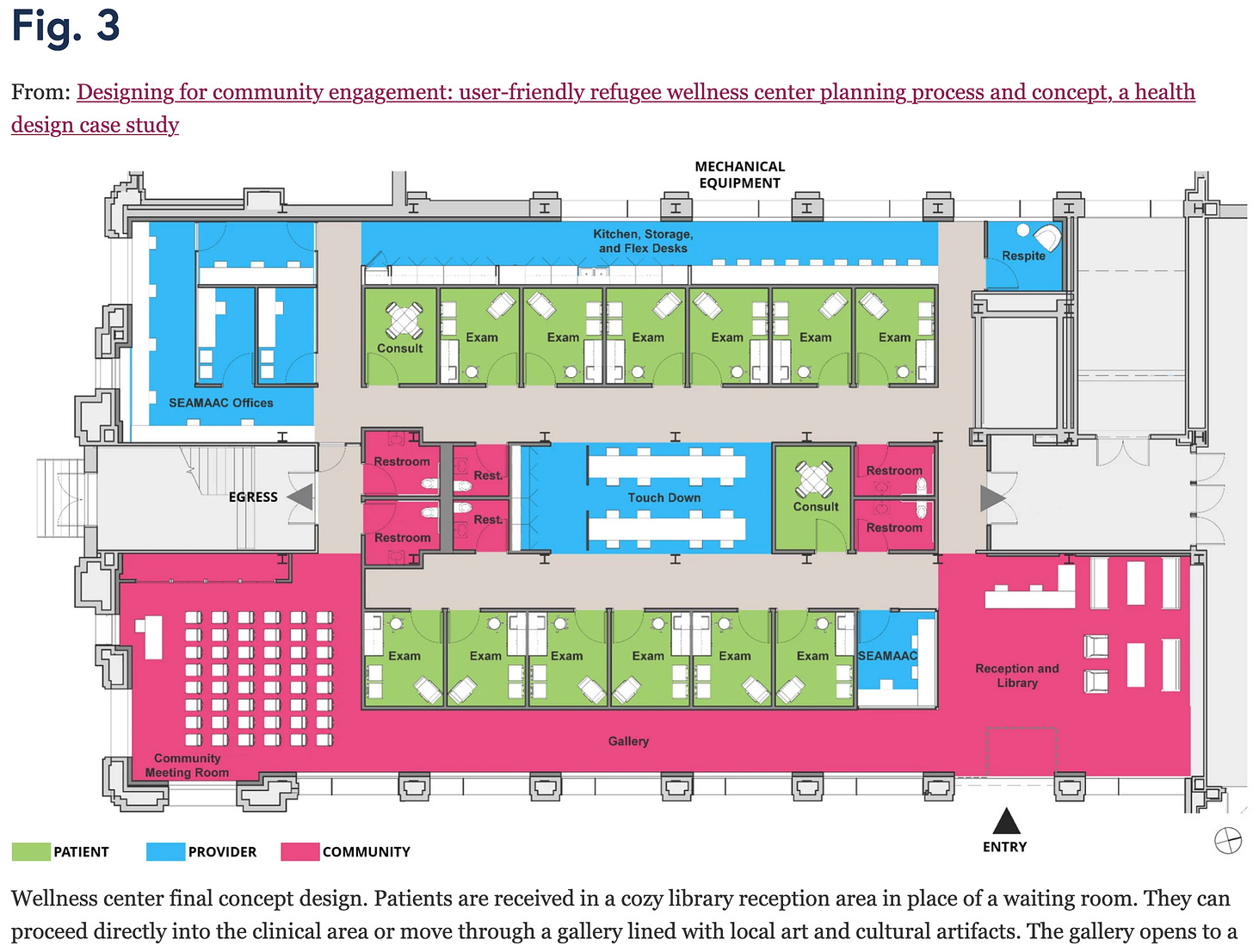Dad’s Sigma Grindset for charity
Unironic topic: Corporate communication brings out community voices
Happy belated Juneteenth and Father’s Day! This was written around the occasion of the latter in honor of the jacked and generous 爸爸 (Baba) Joa.
Continuing my article commentaries, this post discusses how corporate skills are essential for serving others, using an example from health design. Don’t worry, I’m not going to beat the drum about how to build your personal brand, but it’s really about how people skills bring out what’s most human in working among the poor and vulnerable.
When I was growing up, I found the idea of networking distasteful. In response to my studies of missions, Dad would suggest, “Why not be a missionary businessman?” which I never interpreted seriously. My corporate parents urged me to read classic books like How to Win Friends and Influence People, but of course I was immediately repelled by the title, rejecting all targeted social skills improvement as fake and Machiavellian. As a young introvert who often preferred books to people, there was probably a little self-justification for social awkwardness going on. Only once I started med school did I realize presentation and networking skills could be enjoyable, even essential for serving others at scale.
My med school, Thomas Jefferson University, had a curricular option for learning design thinking to solve health problems. I entered the program through a partnership between my undergrad and the med school, and with a few other Princetonians benefited from mentorship with Bon Ku, an avid surfer and professor of emergency medicine and design. When Dr. Ku wasn’t chasing waves, he taught us design thinking methods and threw us into community- and corporate-facing projects.
Design thinking is a valuable skill in itself (you can learn about it in the linked article), but it also cultivates another versatile skill of navigating corporate and funding environments. By applying design principles, we can elicit the goals and underlying beliefs of different parties. These differ and inevitably conflict, so the benefit of design is harmonizing them in a product that satisfies everyone. Fundamental beliefs were something I was theoretically interested in as a religion scholar, so it was even more interesting to bring those out of people and apply them to community work.
Gathering feedback and presenting solutions in a compelling way was intimidating to a wee med student, especially in front of corporate execs, architects, and community representatives who are just meeting each other. Dr. Ku was generous enough to trust me and a couple other students to run meetings during some design projects. The meetings ended up being the best practical education. Our major project was the design process for a South Philly refugee and immigrant clinic with a top-tier architecture firm. This clinic is the first of its kind in the area and serves primarily Southeast Asian patients (Laos, Malaysia, and Vietnam) along with some Latino and Chinese immigrants. We wrote up the process here.

As the article notes, the design thinking process refers to the end user’s experience and goals at every stage of design, from generating ideas to prototyping and testing. These priorities can only be realized through communication with funders and corporate decision makers, who also have a creative vision. Effective business communication humanizes the corporate decision makers to the end users, while showing that the end user’s goals can creatively benefit the organization’s goals. We all want to feel good about our work helping others: that feeling signifies actual cooperation when parties are honest and motivated to work with each other’s goals thanks to effective communication.
When goals are imposed from corporate or NGO top-down, without input from the end user, the user’s investment is low and the product can’t be maintained. For instance, I spent a summer doing public health research in the Kenyan savannah, living at a research center with people doing different biology and development projects. Many development workers lamented, “Why don’t the villagers maintain their clinics or classrooms? Don’t they know what’s good for them?” Yet, these buildings had been built with minimal local consultation and included social engineering projects meant to subvert traditional local values (cough cough, Gates Foundation).
In contrast, keeping the end users at the forefront of each step respects them as a source of design solutions. In our case, using insights from religious studies and anthropology, we envisioned what it might be like for patients and their multigenerational families to move through a clinic visit. Patients would treat the clinic much more as a ritual or hospitality setting, like they did with traditional healers in their countries of origin. We tested this insight through prototypes ranging from drawings (low-fidelity) to virtual reality (high-fidelity). The center has now been open since 2021 and includes the clinic, social services like immigration support, a gallery, and training for clinicians.
In poorly resourced settings, design and good communication are even more important for working amid rapid changes. Displacement of people groups or the influx of drugs make issues as basic as visiting a clinic or getting food look much different on the ground compared to national studies, as in the last post. Organizational leaders want to contribute to solutions but need to know what’s happening to act responsibly. Yet, many of us working in nonprofit settings struggle with motivation to learn corporate communication. Reframing that communication as a way to understand everyone’s fundamental goals and values helps us feel more connected when co-designing solutions (there’s a theological correlate of “co-creating” somewhere in there).
I’m grateful to all who have taught me communication skills and encouraged me to learn more about business mindsets, even when I was a stubborn idealist (Dad, you were right). I am still an idealist, but hopefully less stubborn, so if you share with me any business ideas or communication tips via comments or messages I’ll be most appreciative.
Speaking of communication skills, I’ve used these principles in teaching settings like the Winged Ox Forum, the theology and medicine seminar with the Collegium Institute. I’m continuing to work in different teaching and speaking settings and value your support. If you’ve attended any presentations or seminars I’ve facilitated, I would be grateful if you could leave a review here for others to learn about (last post I forgot to include the link here)!
Stay tuned for some examples of experienced communicators among peers and inspirational figures.


